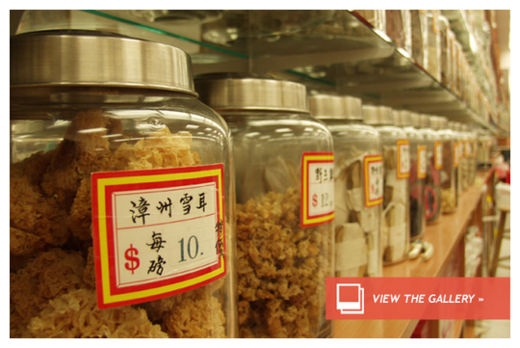
© iStockphoto
Fake and diluted ingredients, including herbs and animal parts, are increasingly finding their way into traditional Chinese medicines. Investigators have found many supposedly medicinal powders diluted with everything from flour to corn starch to sand.
Sometimes the dilutions are the result of cutting corners by manufacturers, but often it's done by middlemen and retailers seeking to increase their profit margins.
There is little or no governmental regulation of these medicines, and the problem is getting worse. As one traditional Chinese medicine manufacturer noted, "counterfeiters are posing a great threat, as fake products are made to closely resemble genuine ones.
Counterfeiters can produce fake medicinal herbs with starch and gypsum powder, or mix dirt or dust with the herbs to increase their weight."
Dilution, Inert Ingredients and PlacebosMany legitimate, regulated drugs and food products contain inert or inactive ingredients or "fillers." Sometimes these ingredients help delay - or speed up - the body's absorption of a drug's active ingredient, for example, while fillers in food may add flavor or bulk, coloring or increase shelf life.
While some Chinese herbs and medicines have active ingredients and work as promised, many others do not, and their efficacy relies on the placebo effect. Because the placebo effect works when the patient believes a drug or treatment is effective, there are relatively few complaints from consumers themselves. The effectiveness is often the same whether the medicines are real, diluted or fake.
This is not to say that altered, diluted, or fake medicine of any kind is good, of course. Though most of the ingredients used to dilute drugs are relatively harmless, some can be toxic. In some cases Chinese herbal medicines may even be contaminated with prescription medications.
A 2002 study in
The Journal of Internal Medicine reported that "an analysis of 2,600 samples of Chinese herbal remedies in Taiwan showed that 24 percent were adulterated with at least one synthetic medicine.... The case reports showed that two or more adulterants were present in 14 of 15 Chinese herbal medicines."
This may be even more dangerous than having no active ingredient at all because prescription drugs invariably carry side effects and drug interaction warnings that the patient needs to know about. Hundreds of thousands of people may be taking heart medications, anti-anxiety, steroids and other drugs without knowing it.
Though most traditional Chinese medicine is consumed in China, counterfeit and diluted Chinese drugs are sold and shipped worldwide, including to Africa where approximately 1/3 of malaria drugs
were found to be bogus or substandard, resulting in many deaths. Unfortunately, malaria cannot be cured by the placebo effect.
But there is another twist to the story, because in some cases fake medicine may help save endangered species.
Endangered Species and Traditional Chinese MedicineDemand for body parts - driven by the alternative medicine and traditional Chinese medicine industries - have severely
threatened giant manta rays, whose populations have declined globally by about a third in recent years. The problem has become so concerning to marine biologists and conservationists that the Australian government recently enacted a law protecting the giant ray.
And it's not just manta rays. Many other animals face similar threats around the world. In Africa, several species of rhinos have been driven to near extinction because of
demand for their horns. They horns are claimed to act as an aphrodisiac or even cure cancer. Tigers and bears have also been slaughtered by the thousands, their bones and claws used in dubious alternative medical treatments.
Ironically, dilution of traditional Chinese medicine may indirectly help reduce the use of these endangered animals: If starch or corn meal can be secretly swapped for rhino horn powder or ground tiger bones, this reduces the demand for these rare animals. The ingredients hold no benefit - and in fact pose a serious risk to wildlife - but old superstitions die hard.
The real tragedy is that these animals are being killed for myths. If manta ray gill rakers, white rhino horns, tiger bones, bear claws and other body parts could actually cure cancer and other diseases, scientists would be studying them to isolate the active ingredients - without further endangering the animals.
Reader Comments
to our Newsletter